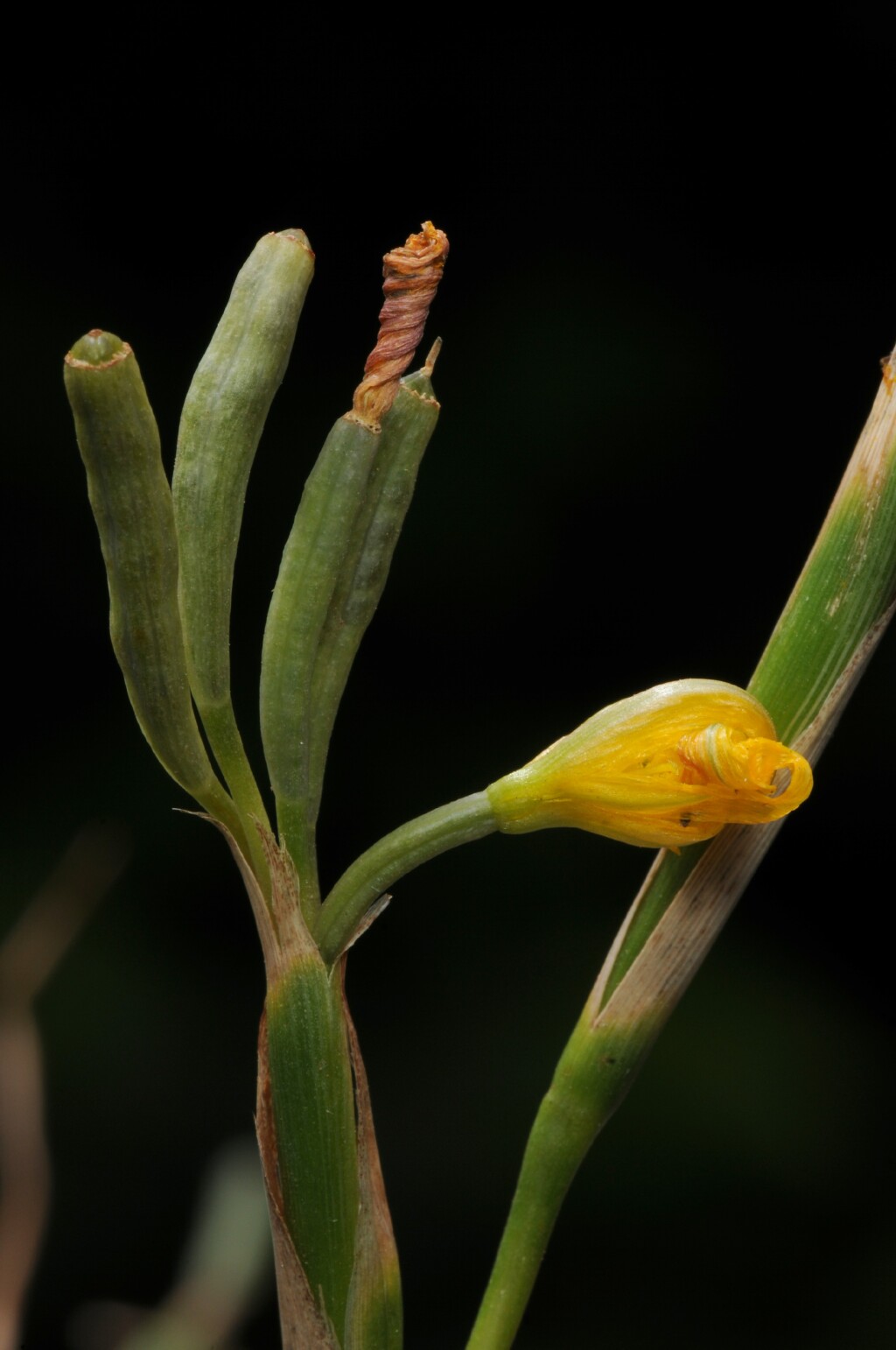Moraea lewisiae
(Goldblatt) GoldblattStem flexuose, rigid. Basal leaves 1–3, 40–80 cm long, 0.2–0.4 cm wide. Inflorescence with scape erect, few-branched, with numerous sheathing primary bracts and numerous flower clusters ± closely appressed to the axis. Primary bracts herbaceous to dry and brown; ‘inner’ bract extending beyond the ‘outer’. Perianth parts bright yellow with outside of segments in outer whorl green, c. 2 cm long, 5–7 cm wide, not fused at base to form perianth tube. Staminal filaments united basally; anthers exposed, erect. Style branches deeply divided, forming 6 filiform arms. Capsule exserted beyond the primary bracts. Flowers Nov.–Dec.
VVP, GipP, HSF. Naturalised in Themeda triandra grassland at Altona North, Derrimut Grasslands, North Warrandyte, Phillip Island, and Watsonia.
Moraea lewisiae and M. virgata are superficially quite similar and distinct from other species of Moraea, having flower clusters arranged laterally along the inflorescence. Both species were previously included in the genus Hexaglottis Vent. Moraea virgata differs from M. lewisiae in having the ovary and capsule included in within the bracts, and in having a perianth tube.
Conn, B.J. (1994). Iridaceae. In: Walsh, N.G.; Entwisle, T.J., Flora of Victoria Vol. 2, Ferns and Allied Plants, Conifers and Monocotyledons, pp. 686–716. Inkata Press, Melbourne.
 Spinning
Spinning

